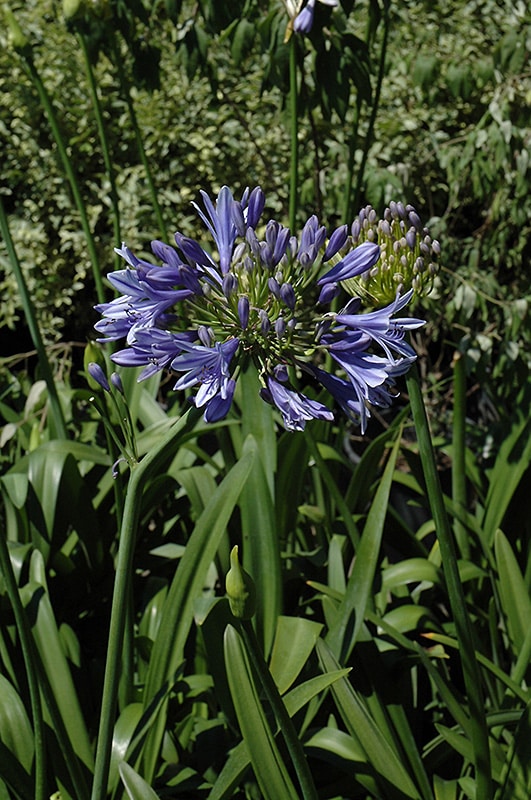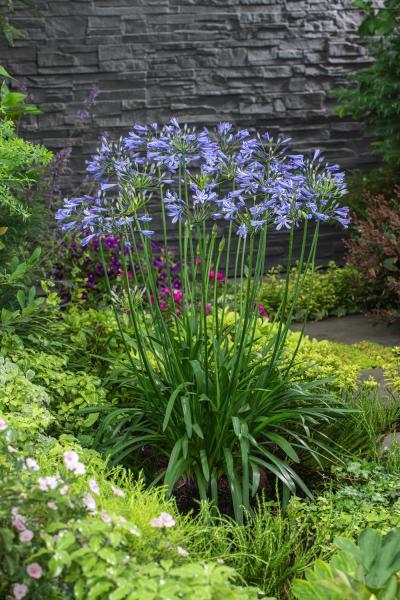Just how to Plant and Maintain Agapanthus in Your Garden
Just how to Plant and Maintain Agapanthus in Your Garden
Blog Article
Mastering the Art of Agapanthus Care: Necessary Steps for Healthy Growth and Dynamic Flowers
In the world of gardening, the farming of agapanthus stands as a gratifying venture for those who look for to support these classy blooming plants. From choosing the ideal selection to grasping pruning strategies, the trip in the direction of cultivating prospering agapanthus plants is multifaceted and holds the vital to opening the full capacity of these botanical gems.

Selecting the Right Agapanthus Variety

When choosing the best Agapanthus variety for your yard, consider variables such as climate viability, blossom shade, and development behavior. Additionally, consider the environment in your area to make sure the Agapanthus range you select can prosper in your specific conditions. Recognizing the growth behavior of different Agapanthus varieties is essential for correct placement within your garden.
Perfect Planting Problems
Considering the optimum ecological demands is necessary for effective Agapanthus farming. Agapanthus plants are delicate to cool temperatures and should be safeguarded from frost during wintertime months.
To make sure healthy and balanced development and dynamic blooms, plant Agapanthus light bulbs at a depth of about 2-4 inches and space them 8-12 inches apart. Including raw material, such as garden compost, to the dirt can boost drain and fertility, promoting durable root growth. Mulching around the base of the plants aids retain wetness and reduces weed development. Routine watering is critical, specifically throughout the expanding season, to maintain the dirt continually damp however not saturated.
Watering and Feeding Tips
Preserving proper wetness degrees and supplying essential nutrients are key elements in the care regimen for Agapanthus plants. When it comes to sprinkling Agapanthus, it is crucial to strike an equilibrium. These plants prefer regularly damp dirt yet are susceptible to root rot if overwatered.
Fertilizing Agapanthus is crucial for promoting healthy growth and prolific blossoms. Use a well balanced plant food, such as a 10-10-10 formula, in the early spring as brand-new development arises. Repeat this application every 6-8 weeks throughout the growing season. Avoid excessive fertilizing, as it can result in rich vegetation at the expense of blooms. Always follow the maker's instructions for correct read the full info here dilution and application techniques. By following these watering and fertilizing ideas, you can ensure your Agapanthus plants flourish and produce vibrant, resilient blooms.
Trimming Strategies for Agapanthus
Pruning Agapanthus plants at the ideal times and with correct strategies is essential for keeping their health and promoting optimal development and flowering. The ideal time to prune Agapanthus is in late winter season or very early springtime before brand-new growth arises.
Deadheading invested flowers can additionally redirect the plant's power right into creating even more flowers instead than establishing seeds. If you desire to accumulate seeds for propagation, leave some blossoms to fully grown and completely dry on the plant.
Keep in mind to use clean, sharp tools to make precise cuts and reduce the danger of introducing conditions. Agapanthus. Routine trimming will certainly help keep your Agapanthus looking healthy and neat while making sure a plentiful screen of beautiful blooms
Dealing With Usual Parasites and Diseases
After making sure appropriate pruning methods for Agapanthus, it is important to resolve usual bugs and diseases that can affect the health and wellness and vigor of these plants. Agapanthus plants are generally durable yet can still succumb specific concerns. One common insect that impacts Agapanthus is the Agapanthus gall midge. This little, orange fly lays its eggs about his in the foliage, resulting in distorted growth and flower buds that fail to open. To combat this pest, trim and ruin any affected plant parts and consider making use of insecticidal soap.
An additional usual problem is fungal leaf spot, which presents as dark sores on the leaves. To stop fungal conditions, guarantee excellent air flow around the plants, avoid overhead watering, and get rid of any type of contaminated fallen leaves without delay. In addition, Agapanthus plants can suffer from root rot if they are planted in poorly draining soil. To avoid this, plant Agapanthus in well-draining dirt and avoid overwatering. By being cautious and taking punctual action versus bugs and diseases, you can aid your Agapanthus plants flourish and generate dynamic blossoms.

Conclusion
To conclude, mastering the art of agapanthus treatment includes picking the best selection, offering optimal planting problems, appropriate watering and feeding, ideal pruning techniques, and resolving common bugs and diseases. By following these necessary actions, you can ensure healthy and balanced growth and dynamic flowers for your agapanthus plants. Keep in mind to on a regular basis check and preserve your plants to advertise their total wellness and longevity.
To ensure healthy growth and vivid blossoms, plant Agapanthus bulbs at a depth of about 2-4 inches and space them 8-12 inches apart. By following these watering and feeding suggestions, you can ensure your Agapanthus plants prosper and create dynamic, lasting blossoms.
One typical insect that influences Agapanthus is the Agapanthus gall midget. Additionally, Agapanthus plants can experience from root rot if they are try this site grown in improperly draining dirt. By complying with these essential steps, you can make sure healthy growth and vibrant flowers for your agapanthus plants.
Report this page